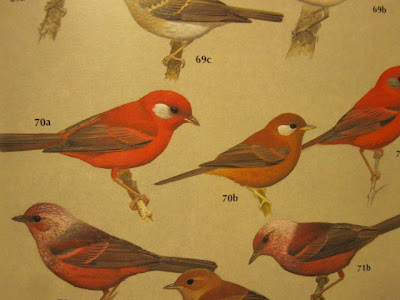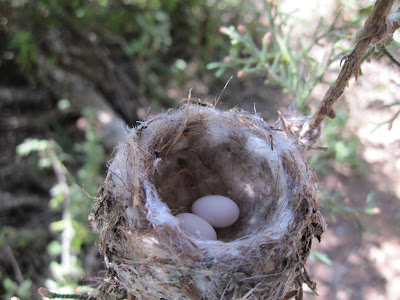Thank you, Nunes, for permission to use your photo!
Here's the thing: I get to learn something about birds nearly everyday. This time my lesson was about barn owls.
I knew there were barn owls (Tyto alba) under the bridge to Jaracuaro, thanks to my good friends Wayne and Susan Colony, formerly of San Miguel de Allende, Mexico, and now living in the Tucson, Arizona, area. As many times as I have birded the bridge, the owls never made their presence known until Wayne and Susan mentioned the owls to me.
Last month, Bruce and I went to the bridge to check out the owls. It's not an easy access, for one must duck under a barbed wire fence, manage to traverse a steep rocky slope, and climb some stones to get under the bridge to where one might peer into the dark ledges of the underside of the bridge to where the owls might be. Of course, there's also the garbage one must step through to get to the vantage point and the very active bee hive one must avoid to reach the best spot to see the owls. I am wary of the hive, for I have been stung twice now.....the last time my arm swelled twice normal size and hurt for several days.

The bridge to Jaracuaro.
A climb up the right side offers a view into the left side where the second set of owlets are.
Along the way, we flushed two owls. No problema, I thought. We focused our binocs on the ledge and, lo and behold, spotted some owlets. We stayed a moment to count them - three babies no more than a day old. How cool can that be?!
We returned the next day to photograph them. Only this time, we flushed one adult and could not find the owlets. I was frantic, and Bruce was left holding a camera with nothing to shoot. I started to scan the area in case the family moved from one part of the bridge structure to another. Eventually, on the other side of the water channel, I spotted an adult. She didn't move, and I wasn't sure what she was doing. Was she hiding the owlets?
Puzzlement set in. Was she hiding the owlets? Had they been moved? If so, how could that be, given their sharp talons and beaks? Mostly I worried about the owlets we had seen - they were freshly hatched and so very vulnerable.
I emailed a couple of experts, and Jamie Acker from Bainbridge Island, Washington, suggested that I make sure there wasn't another nest under the bridge. Duh! It hadn't occurred to me. But sure enough, the next time I visited, I was able to count three adults.
Thus, I can admit to having learned some lessons about barn owls over the last couple of weeks:
- I have come to believe that the set of three owlets perished, probably due to our having flushed the adults.
- I know there are three adult barn owls living under the bridge: two females and one male.
- I have also discovered that the second female hatched two owlets and they are doing just fine. They are white, fuzzy balls very similar to those in Nunes' photo.

The new family is living in the dark area at the top of the columns.

 Swallow-tail butterfly larva
Swallow-tail butterfly larva A bat under the eaves of my house
A bat under the eaves of my house Male black-polled yellowthroat
Male black-polled yellowthroat Black-chested sparrow
Black-chested sparrow Birding at La Estacion near Erongaricuaro
Birding at La Estacion near Erongaricuaro Behind the concession stand at Arroyo Frio
Behind the concession stand at Arroyo Frio Black-chested sparrow at Tacambaro
Black-chested sparrow at Tacambaro
 Yes, La Espiga bakery. What a way to start the day!
Yes, La Espiga bakery. What a way to start the day! Maestro at La Espiga bakery
Maestro at La Espiga bakery Prowling the bushes for Red warblers near Zarzamora
Prowling the bushes for Red warblers near Zarzamora Sid just ticked off another bird on his life list!
Sid just ticked off another bird on his life list! Lunch break in Erongaricuaro on market day
Lunch break in Erongaricuaro on market day














 Rhynchonycteris naso - Fringe-lipped bat
Rhynchonycteris naso - Fringe-lipped bat
